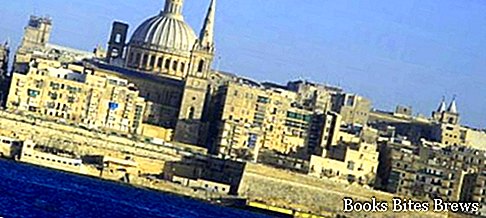What to see in Malta, a one-week itinerary including the main monuments and places of interest on the Mediterranean island, including Valletta and the ancient capital Mdina.
Tourist information
Due to its strategic position, the island of Malta has always been, since the past, the crossroads of numerous civilizations.
Inhabited since prehistoric times, it was colonized by the Phoenicians and the Greeks, it came under the control of Carthage and was conquered by the Romans and in 60 AD.
Malta is also famous for being the place where Saint Paul was shipwrecked during his trip to Rome.
After a period of Byzantine rule, the island was conquered by the Arabs, who introduced new crops and the Arabic language.
Arab rule ended with the arrival of the Normans from the Kingdom of Sicily, followed by the Angevins, the Hohenstaufen and the Aragonese.
In 1530 Charles V granted Malta for permanent rent to the Hospitaller Knights, known as the Knights of Malta, a military monastic order which in 1565 was able to heroically defend the island from the siege of the Turks.
The Knights fortified the island and built the city of Valletta.
The order lost the sovereignty of the island in 1798 when they were driven out by Napoleon, who requisitioned all their assets.
The Maltese rebelled against the French and, with the help of Great Britain and the Kingdom of the two Sicilies, managed to get rid of them.
Despite being the sovereignty of the island claimed by the Bourbons, Malta became part of the British Empire until 1964, when it gained independence.
Recommended readings- Malta: useful information
- Malta: what to see in a week
Since 2003 it has joined the European Union.
Today tourism is highly developed in Malta, thanks to the favorable characteristics of the archipelago, first of all the beauty of its beaches and the mild climate all year round.
What see
Valletta, the capital of Malta, is rich in historical monuments and is part of the UNESCO World Heritage Sites.
The Cathedral of San Giovanni, elected co-cathedral together with San Pawl in Mdina, was built at the behest of the Hospitaller Knights from 1573 to 1577.
Simple from an architectural point of view, it houses beautiful works of art, paintings, frescoes, decorations and sculptures, executed by great masters.
In the oratory there is the "Beheading of San Giovanni Battista" by Caravaggio.
The Grand Master's Palace, with its majesty and grandeur, testifies to the importance of the order of the Knights of Malta.
Casa Rocca Piccola is a rich private aristocratic residence, which preserves inside precious collections testifying the uses and customs of the Maltese nobility of the last 400 years.
The national museum of archeology, the Museum of Fine Arts and the Hypogeum of Hal Saflieni (Paola), which is an underground cavity extended on three levels dating back to different periods, between 3600 and 2500 BC, deserve to be seen.
The Hypogeum was originally a sanctuary, while in prehistoric times it became a necropolis.
Today it is included in the list of world heritage sites declared by UNESCO and can be visited by booking in advance.
Mdina is the ancient capital of Malta, surrounded by imposing walls built by the Arabs, with rich noble palaces inside.
Palazzo Falson, which is the second oldest palace in Mdina, is open to the public for visits.
Marsaxlokk is a picturesque fishing village, as well as the island's second natural port.
Vittoriosa, Senglea and Cospicua, known as Cottonera, are cities located on three peninsulas that hosted the dry docks of the British Navy and for this reason, during the Second World War, they suffered devastating bombings.
The galleries excavated in the fortification walls, which can be visited today, date back to that tragic period.
It is also possible to visit the Inquisitor's Palace, the Church of San Lorenzo, the Oratory of San Giuseppe and the Maritime Museum.
On the islands of Malta and Gozo there are important megalithic temples, the oldest of which dates back to 5000 BC.
These places are listed on the UNESCO list.




